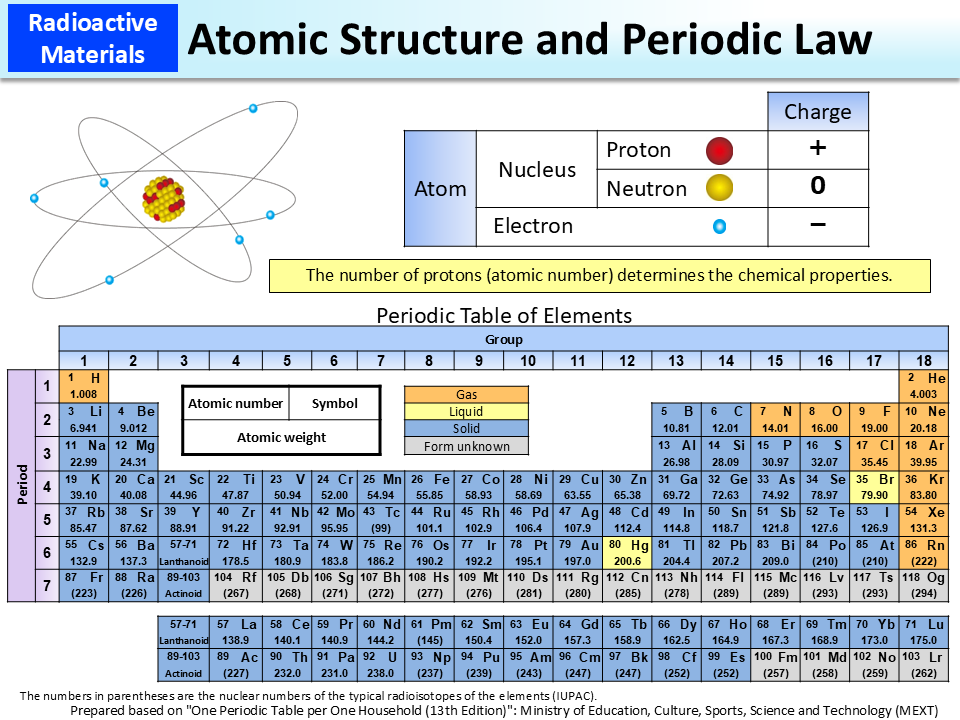Atomic Structure and Periodic Law
An atom is composed of a nucleus and electrons that go around the former. The nucleus is composed of protons with a positive charge and neutrons without charge, and the number of protons (atomic number) determines the chemical properties of the atom (element type).
For example, carbon has six protons, but there are also types of carbon with five, six, seven or eight neutrons. All of them have the same chemical properties.
When calling them distinctively, they are called Carbon 11, Carbon 12, Carbon 13 and Carbon 14, adding the nuclear number (total of protons and neutrons) after the element name, which is a nominal designation that covers the same types of atoms. Carbon 12 is the one that most commonly exists in nature.
Carbon 14 is a radionuclide which exists in nature and is made through a process where a proton of Nitrogen 14 is hit and removed by a neutron created as a result of collisions of cosmic rays and the atmosphere. Carbon 14 has six protons and eight neutrons, and the state is energetically unstable because of the unbalance of both numbers.
If one neutron of Carbon 14 changes to a proton, the element becomes stable because the numbers of protons and neutrons are both seven. At this time, an electron is emitted as extra energy. This is the identity of β (beta)-particles. In other words, Carbon 14 returns to nitrogen having seven protons by emitting β-particles, and becomes energetically stable.
- Included in this reference material on March 31, 2013
- Updated on March 31, 2023

